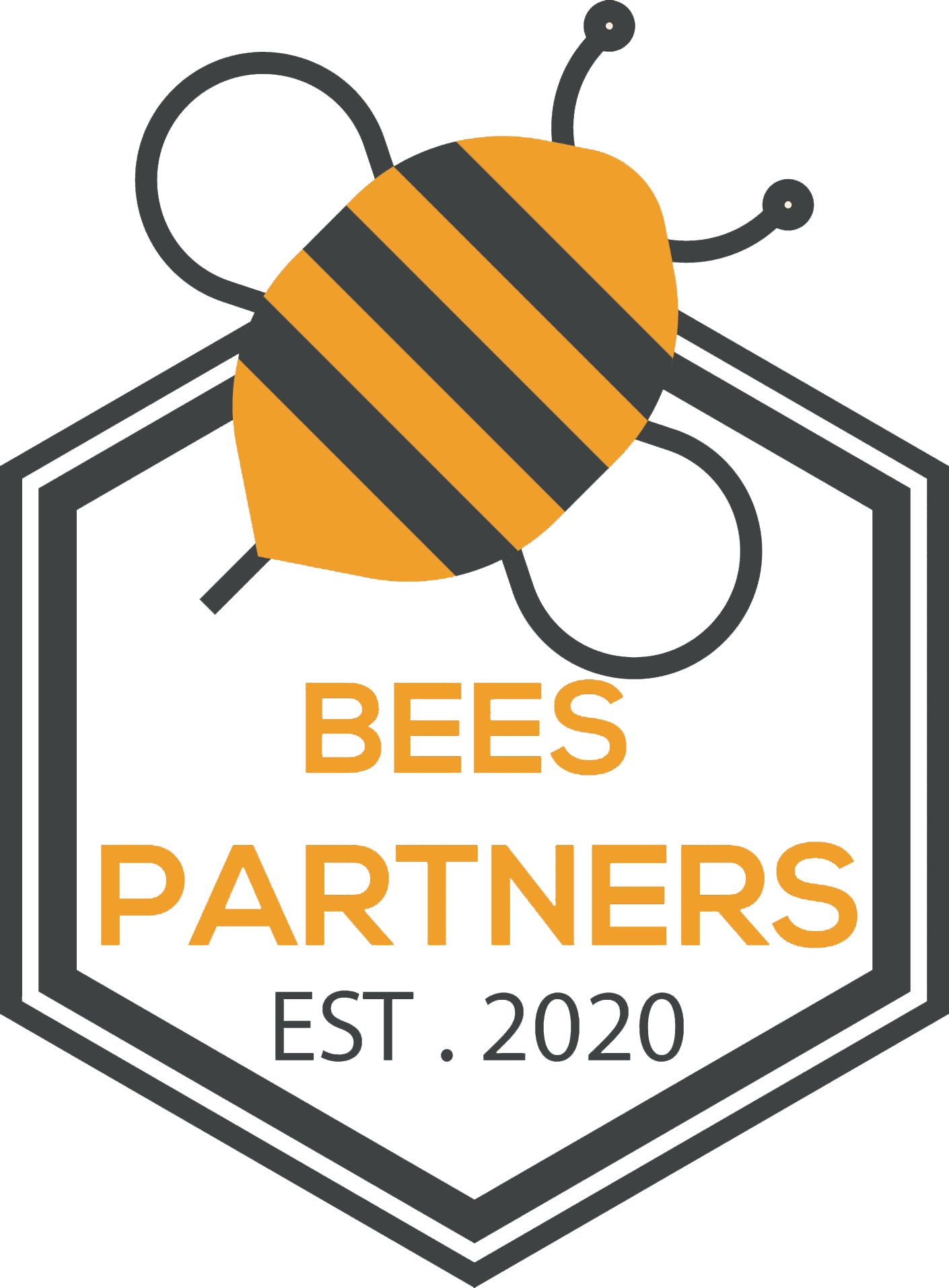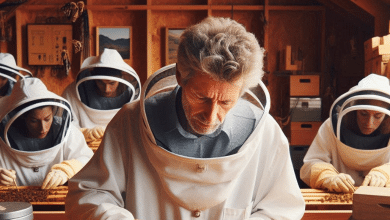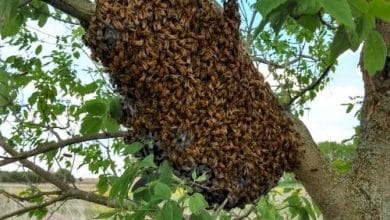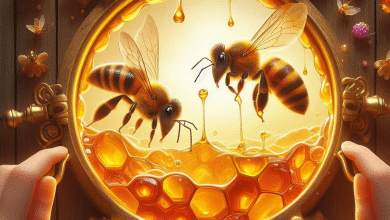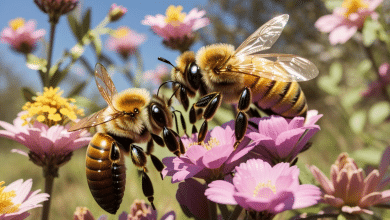How to Buy a Queen Bee A Comprehensive Guide for Aspiring Beekeepers
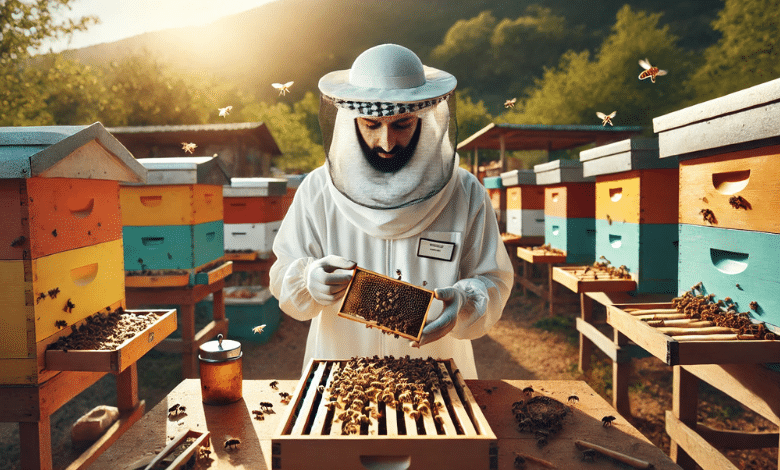
How to Buy a Queen Bee, the queen bee serves as the heart of the hive, playing a critical role in its survival and productivity. Without her, a colony struggles to function, leading to its eventual decline. The queen bee is primarily responsible for reproduction, with the ability to lay up to 2,000 eggs each day during peak seasons. This prolific egg-laying is crucial for maintaining a robust workforce of worker bees that manage foraging, hive maintenance, and brood care.
Thank you for joining us on this journey through the essential steps of purchasing a queen bee. Whether you’re a budding beekeeper or looking to expand your apiary, I hope this guide has equipped you with the knowledge you need to make an informed decision. Remember, the health and productivity of your hive largely depend on the queen bee, so choose wisely! I’d love to hear your thoughts or any questions you have about queen bee selection. What challenges are you facing as you venture into beekeeping? Share your insights below! Happy beekeeping!
The queen also produces pheromones, chemical signals essential for regulating the hive’s behavior and social structure. These pheromones not only help maintain harmony among worker bees but also signal when it’s time to swarm or reproduce. Essentially, a healthy queen bee translates into a thriving colony, making her importance immeasurable.
Characteristics of a Queen Bee
A queen bee has several distinctive characteristics that set her apart from worker bees:
- Physical Size: The queen is typically larger than worker bees, boasting a more elongated abdomen that allows for the efficient storage and laying of eggs.
- Lifespan: Unlike worker bees that may live a few weeks, a queen bee can live several years, sometimes even up to five years. This longevity allows her to establish a stable, ongoing reproductive cycle.
- Behavior: She exhibits a purposeful movement within the hive, often being attended to by worker bees, which help groom and feed her. Queens exude a certain level of authority and social status in the hive.
- Nuptial Flight: A queen bee undergoes a unique mating ritual called a nuptial flight, where she mates with several drones during a single flight to ensure genetic diversity in her offspring.
Ultimately, understanding the importance and characteristics of queen bees is fundamental for beekeeping success, whether you’re a seasoned expert or just beginning your beekeeping journey.
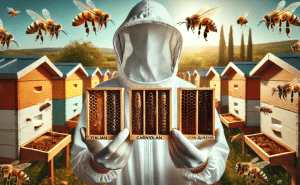
Contents
- 1 Types of Queen Bees
- 2 Where to Buy Queen Bees
- 3 Factors to Consider When Buying a Queen Bee
- 4 Evaluating Queen Bee Sources
- 5 Purchasing and Receiving Your Queen Bee
- 6 Monitoring the Queen Bee Performance
- 7 Troubleshooting Queen Bee Issues
- 8 How Much Does 1 Queen Bee Cost?
- 9 Can I Just Buy a Queen Bee?
- 10 How Much Does a Queen Bee Cell Cost?
- 11 When Should I Buy a New Queen Bee?
Types of Queen Bees
Carniolan Queen Bees
Carniolan queen bees are a favorite among beekeepers, especially those in colder climates. Originating from the mountainous regions of Slovenia, these bees have adapted remarkably well to harsh weather conditions. Here are some standout traits:
- Cold Hardiness: Carniolan queens thrive in lower temperatures, making them ideal for regions with long winters.
- Rapid Brood Production: They are known for their ability to quickly ramp up brood production in the spring, allowing colonies to grow stronger faster.
- Gentle Temperament: Many beekeepers report a calmer disposition, which makes hive management more enjoyable.
These traits make Carniolan queens a reliable choice for anyone looking to build a robust bee colony, particularly in areas where winter survival is a concern.
Italian Queen Bees
Italian queen bees are perhaps the most recognized variety among beekeepers, and for good reason. They are celebrated for their high productivity and easy-going nature. Here are some key characteristics:
- High Honey Production: Italian queens are prolific egg layers, ensuring a plentiful workforce for foraging and hive maintenance.
- Docile Nature: They are often recommended for novice beekeepers due to their friendly demeanor, which makes handling the hive less stressful.
- Adaptability: This breed adapts well to various environmental conditions, making it suitable for beekeepers across different regions.
Many beekeepers opt for Italian queens when establishing new hives for these reasons, finding them reliable and efficient in producing honey.
Buckfast Queen Bees
Buckfast queen bees have gained popularity in recent years for their unique attributes. Developed by Brother Adam in the early 20th century, they are a hybrid of various strains aimed at producing desirable traits. Key benefits include:
- Disease Resistance: Buckfast bees are known for their resilience to common bee diseases and pests, making them a wise choice for sustainable beekeeping.
- Excellent Foragers: They are efficient foragers, which translates into higher honey yields for the beekeeper.
- Calm Disposition: Just like their Italian counterparts, Buckfast bees are gentle, which can significantly reduce the risk of aggressive behavior in the hive.
With their favorable traits, Buckfast queens are becoming increasingly appealing for both new and experienced beekeepers seeking to enhance their colonies.

Where to Buy Queen Bees
Local Beekeeping Associations
One of the best places to find high-quality queen bees is through local beekeeping associations. These organizations often act as a hub for beekeepers in your area, providing support, educational resources, and networking opportunities.
- Benefits of Buying Locally:
- Adaptation to Local Climate: Queens sourced from local breeders are often better suited to the environment and forage availability.
- Direct Interaction: You can interact directly with the breeder, gaining invaluable insights into the queen’s health and performance history.
- Community Support: By purchasing locally, you foster community engagement and support fellow beekeepers.
Many local beekeeping clubs also organize queen rearing workshops, where you might have the chance to acquire a queen directly from members who are breeding them.
Commercial Bee Suppliers
For those who prefer a more structured approach, commercial bee suppliers offer a variety of queen bees, often with extensive breeding backgrounds. These suppliers typically provide options such as mated queens, virgin queens, and even queen cells.
- Key Features:
- Wide Selection: You have access to different breeds suited for various climates and management styles.
- Reputable Breeders: Many commercial suppliers are known for their high-quality stock and disease-resistant queens.
- Quality Assurance: Suppliers usually provide guarantees on the queens’ health and performance, which can bring peace of mind.
Keep in mind that purchasing from commercial suppliers may come with a higher price tag and the added need to monitor for timely shipping delivery.
Online Beekeeping Stores
In today’s digital age, online stores for beekeeping supplies have become increasingly popular. Websites like OPH Beekeeping Supplies and Foxhound Bee Company make it easier than ever to order queen bees from the comfort of your home.
- Advantages:
- Convenience: You can browse a wide range of options, compare prices, and read customer reviews.
- Year-Round Availability: Unlike local suppliers, online stores may offer queen bees even during off-season months, especially those sourcing queens from warmer climates like Hawaii.
- Direct Shipping: Many online suppliers will ship queens directly to your door, making it easier to integrate new queens into your hives without the need for local pick-up.
While online purchases can save time and provide a larger selection, it’s essential to research the supplier’s reputation to ensure you’re getting a healthy, quality queen.
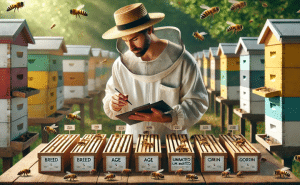
Factors to Consider When Buying a Queen Bee
Health and Genetics
When it comes to selecting a queen bee, health and genetics are paramount. A healthy queen can significantly impact your hive’s productivity and longevity. Here are some key pointers to consider:
- Disease Resistance: Ensure the queen has been bred in a disease-free environment. Reputable breeders will conduct health screenings and give you a clean bill of health for their queens.
- Genetic Lineage: The genetic background of the queen can influence her offspring’s characteristics. Opt for queens from lines with a proven track record of resilience and productivity.
- Documentation: Request to see any health certifications or documentation from the breeder that indicates the queen’s lineage and testing results.
Having a solid genetic foundation helps in maintaining a strong, vibrant colony.
Age and Mating Status
The age of a queen bee plays a crucial role in her effectiveness. Ideally, you should look for:
- Young Queens: Those less than a year old are most productive, with the capability to lay a significant number of eggs. As the saying goes, “A young queen is a happy queen!”
- Mated vs. Virgin: A mated queen is ready to start laying eggs immediately, while a virgin queen may take time to find drones for mating. Purchasing a mated queen can give your colony a head start, especially in the spring.
Selecting a young and mated queen aids in establishing a robust hive quickly.
Price and Shipping Options
When considering buying a queen bee, price and shipping logistics can impact your decision:
- Cost: Expect to pay anywhere from $25 to $40 for a queen, depending on her type and pedigree. Remember that sometimes spending a bit more can mean investing in a healthier, more productive queen.
- Shipping Considerations: Queens are typically shipped quickly to avoid stress. Ensure that your supplier has solid protocols to package and ship the queen safely. Confirm the shipping times and be prepared to receive the queen promptly, as any delays can jeopardize her well-being.
By weighing these factors, beekeepers can make informed decisions that contribute to a more fruitful and sustainable beekeeping experience.
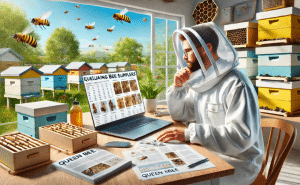
Evaluating Queen Bee Sources
Reputation of the Seller
When it comes to purchasing a queen bee, the reputation of the seller is pivotal. A trustworthy supplier can make all the difference in ensuring you receive a healthy and productive queen. Here’s what to look for:
- Long-standing History: Suppliers with years of experience in the industry are often more reliable, as they have established reputations to maintain.
- Specialization: Look for vendors who specialize in bee products. This often means they have a deeper knowledge of bee genetics and care.
- Transparency: Good sellers will provide detailed information about their breeding practices, health protocols, and lineage of queens. A reputable seller doesn’t shy away from answering your questions.
Finding a reliable seller can save you from purchasing a subpar queen and experiencing significant losses in your hive.
Reviews and Testimonials
In our digital age, reviews and testimonials can provide invaluable insights into a seller’s reliability and the quality of their queens. Here’s how to harness this feedback effectively:
- Customer Feedback: Look for reviews on the seller’s website and third-party platforms. Positive feedback from previous customers can indicate a high level of satisfaction.
- Social Media Insights: Check social media groups or forums related to beekeeping. Beekeepers often share their experiences with various suppliers, allowing you to gauge overall satisfaction.
- Ask for Recommendations: Don’t hesitate to reach out to fellow beekeepers or local associations for their preferred suppliers. They can often point you in the right direction.
Using reviews and testimonials can help you make an informed decision about which seller to trust.
Guarantees and Return Policies
Before making a purchase, it’s crucial to assess a supplier’s guarantees and return policies. Transparency in these areas can safeguard your investment:
- Health Guarantees: A good supplier should guarantee the health and productivity of their queens for a certain period, ensuring you a refund or replacement if your queen fails to thrive.
- Return Policy: Understand the return policy should the bee arrive in poor condition or be incompatible with your hive. This will help you avoid unexpected losses.
- Shipping Protections: Verify whether the seller takes measures to ship queens safely, such as using insulated packaging or expedited shipping methods.
By evaluating these factors, you can ensure a safer and more successful experience when buying your queen bee. Investing time in researching sellers will help you avoid pitfalls and promote a thriving hive.
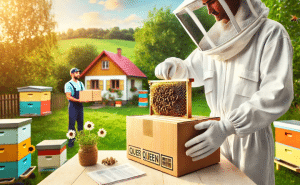
Purchasing and Receiving Your Queen Bee
Ordering Process
When you’re ready to purchase your queen bee, the ordering process can vary slightly depending on your chosen supplier, but it generally follows these steps:
- Select Your Supplier: Research reputable sources, focusing on their reputation, breeding practices, and customer reviews. This will help ensure the quality of your new queen.
- Choose the Breed: Identify the breed that best fits your beekeeping needs. Whether you’re looking for an Italian, Carniolan, or Russian queen, make sure she’s well-suited for your climate and hive management style.
- Place Your Order: Add your selected queen bee to your cart and proceed with the checkout. Be ready to provide shipping information and payment details. Some suppliers may also offer additional options, such as marking or clipping the queen’s wings for easy identification and to prevent swarming.
- Confirm Shipping Dates: Ensure you know when your queen will arrive, and make arrangements to be available to receive her.
Preparing for Queen Bee Arrival
Preparation is key to ensuring a smooth transition for your new queen into the hive. Here’s how to get ready:
- Inspect Your Hive: Make sure your hive is clean and free of excess moisture or debris. Check the overall health of the colony to confirm it’s a suitable environment for the new queen.
- Prepare the Queen Cage: Upon arrival, the queen will typically be shipped in a cage. Make sure you have a plan for how to place her in the hive as soon as she arrives for minimal stress.
- Set Up: Have your tools ready, including a smoker and veil, to ensure you can safely handle the introduction process without alarming the worker bees.
Introducing the Queen Bee to the Hive
Successfully introducing your new queen bee to the colony is crucial for her acceptance and the stability of your hive. Follow these steps:
- Inspect the Queen: Upon receiving her, check that she is healthy and active. Look for signs of stress during transit.
- Use a Queen Cage: Place the queen in her cage inside the hive with the exit blocked, usually by a sugar candy plug. This allows the worker bees to acclimate to her pheromones gradually.
- Monitor Behavior: Observe the workers over the next few days. If they exhibit aggression, wait longer before releasing her. Acceptance is indicated when they begin to care for her and show less aggressive behavior.
- Release the Queen: After a few days, remove the candy plug to allow her to integrate naturally. Keep a close eye on the hive and check for egg-laying activity within a week to ensure successful incorporation.
By following these guidelines, you can set the stage for a harmonious and productive new chapter in your beekeeping journey.
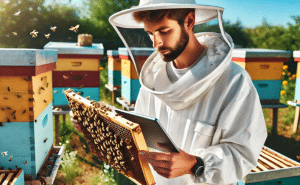
Monitoring the Queen Bee Performance
Hive Inspection
Regular hive inspections are an essential component of successful beekeeping, particularly after introducing a new queen bee. These inspections help ensure that the colony is thriving under her leadership. Here’s what to focus on during a hive inspection:
- Check for Queen Presence: During your inspections, look for signs of the queen by searching for her physically among the frames. She is often larger than the worker bees and can be identified by her robust abdomen.
- Evaluate Hive Health: Look for any signs of disease or pests, such as Varroa mites or foulbrood. A healthy hive will have active worker bees, consistent brood patterns, and an orderly layout of honey and pollen stores.
- Observe Behavior: Monitor the mood of your bees. A calm, productive hive is a good indicator that your queen is well-accepted and performing her role effectively.
Engaging in routine inspections can help catch potential issues early and promote a healthy hive environment.
Tracking Egg Laying Patterns
One of the most telling signs of a healthy queen is her egg-laying patterns. Here’s how to track them:
- Observe Brood Patterns: After about a week of introducing a new queen, check for signs of brood in the hive. A healthy queen can lay up to 2,000 eggs per day during peak seasons, so consistent brood patterns are essential.
- Assess Egg Placement: Eggs should be laid in a uniform pattern across the brood frames. If you notice irregularities in egg placement, it could indicate problems with the queen or hive health.
- Look for Larvae: Active larvae development at various stages indicates good egg-laying and the overall health of the colony.
Staying vigilant in monitoring egg-laying patterns helps gauge the queen’s productivity and adjust management strategies as needed.
Queen Bee Replacement Considerations
As seasons change and your hive dynamics evolve, it may become necessary to consider queen replacement. Here are a few scenarios to think about:
- Age and Performance: Queens typically remain productive for about two years. If your queen is older and her egg production begins to decline, it may be time for a replacement to maintain hive health.
- Aggression Levels: If you observe increased aggression in your hive, it might be a sign that the queen needs replacement. Worker bees usually respond poorly to an ineffective queen, impacting overall hive morale.
- Disease and Physical Health: Should your queen become mated poorly or develop health issues, replacing her can restore normal colony function.
By keeping an eye on these factors, you can ensure your hive remains productive and vibrant, ultimately leading to greater honey yields and a healthier apiary.
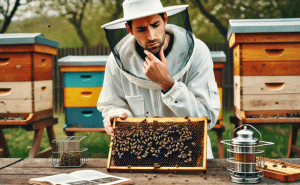
Troubleshooting Queen Bee Issues
Queen Supersedure
Queen supersedure occurs when a colony decides to replace its existing queen. This natural process can be prompted by various factors, such as the queen’s declining performance or health issues. Here are some signs to look for:
- Decreased Egg Production: If the queen is laying fewer eggs than usual, it may signal underlying health problems, such as disease or aging.
- Aggressive Behavior in the Colony: If bees display unusual aggression, it could indicate that they are unhappy with their queen.
- Presence of Queen Cells: If you spot queen cells on the frames, the bees are preparing to replace their queen.
To manage supersedure, ensure the queen is healthy and productive. If she is failing, consider introducing a new queen to replace her, as ensuring smooth transitions helps maintain colony harmony.
Queenlessness
A queenless hive poses significant risks, as the colony’s structure collapses without this critical reproductive leader. Signs of queenlessness include:
- No Eggs or Larvae: If you notice a lack of eggs or brood in the hive, the queen may be missing or dead.
- Increased Aggression: Worker bees may display heightened agitation due to the absence of pheromones from a healthy queen.
- Swarming Behavior: In some cases, the colony may attempt to swarm in search of a new queen.
To address queenlessness, you can either allow the bees to rear a new queen from existing larvae or introduce a new, mated queen to restore balance in the hive.
Dealing with Aggressive Queens
Aggression among bees can complicate hive management, especially when a new queen initiates dominance. Here’s what to do if you encounter an aggressive queen:
- Evaluate the Situation: Determine if the aggression stems from the queen or discontent within the worker bee population.
- Monitor Hive Conditions: Ensure that the environment is conducive to calm behavior. Stressors like overcrowding, lack of food, or pests can trigger aggression.
- Consider Replacing the Queen: If the queen’s temperament is consistently aggressive and disruptive, think about replacing her with a more docile breed that fits your management style.
Being proactive in addressing these issues can maintain a harmonious hive, leading to better productivity and happier bees. Each hive is unique, so monitoring behavior and making adjustments as needed will contribute to a thriving apiary.

Recap of Key Points
As we wrap up this comprehensive guide on queen bees, it’s essential to highlight what we’ve learned about selecting and managing these remarkable insects:
- Importance of the Queen: The queen is the cornerstone of a healthy hive. Her ability to lay eggs and produce pheromones is fundamental for maintaining the colony’s social order and productivity.
- Choosing the Right Queen: Factors such as breed, health, and age play a crucial role in determining the success of your hive. Different breeds offer unique advantages, so selecting the right one for your specific conditions is vital.
- Purchasing Sources: Local breeders provide queens tailored to your regional environment, while online suppliers often offer a broader selection. Regardless of where you choose to buy, ensure the reputation of the seller is solid.
- Introduction Techniques: Successfully integrating a new queen into your colony is a delicate process that includes careful observation and proper acclimatization strategies.
- Troubleshooting Issues: Understanding queen supersedure, addressing queenlessness, and managing aggressive queens can prevent significant setbacks in your beekeeping journey.
Encouragement for Aspiring Beekeepers
As an aspiring beekeeper, remember that patience and practice are key. The art of beekeeping comes with its challenges, but the rewards are plentiful. From the sweet honey you’ll harvest to the pollination benefits you’ll contribute to your local ecosystem, every moment spent nurturing your bees is worthwhile.
- Stay Informed: Continuously seek out knowledge, whether through reading, attending workshops, or connecting with experienced beekeepers. Each piece of information adds to your skill set and confidence.
- Start Small: If you’re new to beekeeping, consider starting with one or two hives. This manageable approach allows you to learn and grow without overwhelming yourself.
- Enjoy the Journey: Every hive brings its unique set of experiences. Celebrate the successes and learn from the challenges. Each bee is a testament to your commitment and care, paving the way for a thriving environment.
By taking these steps, you not only contribute to sustainable practices but also immerse yourself in the rewarding world of beekeeping. Happy beekeeping!
How Much Does 1 Queen Bee Cost?
When it comes to beekeeping, understanding the costs associated with acquiring a queen bee can help you budget effectively and plan for the future of your hive. Prices for queen bees can vary significantly based on several factors, including breed, breeder reputation, and availability. Let’s break down the costs.
General Price Range
The cost of a mated queen bee typically falls between $30 and $60. Here’s a closer look at what influences these prices:
- Italian Queen Bees: As one of the most popular choices among beekeepers, Italian queens typically range from $30 to $50. Their mild temperament and high honey production make them a favorite for beginners and seasoned beekeepers alike.
- Carniolan Queen Bees: Expect to pay between $35 and $55 for a Carniolan queen. Known for their adaptability to colder climates and overall calm nature, these queens offer a solid choice for those in variable weather conditions.
- Russian Hybrid Queen Bees: Priced similarly to Italian and Carniolan queens, Russian hybrids cost around $30 to $55. They are particularly valued for their resistance to Varroa mites, a common pest that can plague honeybee colonies.
- Buckfast Queen Bees: Slightly more expensive, Buckfast queens usually range from $40 to $60. Renowned for their gentleness and productivity, they are sought after by beekeepers who prioritize ease of management.
Additional Considerations
- Mated vs. Virgin: Mated queens, which are ready to produce eggs, tend to cost more than virgin queens, who have yet to mate.
- Location and Availability: Pricing can vary based on your geographical location and the time of year. Early spring often sees higher prices due to increased demand from beekeepers starting new hives.
- Shipping Costs: If you’re purchasing online, don’t forget to factor in shipping costs, which can range from $10 to $30, depending on the supplier and shipping method.
By understanding these price points, you can make informed decisions about your beekeeping investment, ensuring that you choose a queen that best fits your needs and budget. Whether you are a seasoned pro or just starting, selecting the right queen bee is a crucial step towards a thriving hive.
Can I Just Buy a Queen Bee?
As a newcomer to beekeeping or someone considering expanding their apiary, you may wonder if you can simply buy a queen bee and start a new colony. While the process might seem straightforward, there are several factors to consider when opting for just a queen bee.
Understanding the Role of the Queen
First and foremost, it’s essential to recognize that the queen bee plays a pivotal role in the hive’s operation. She is the sole egg-laying female, crucial for maintaining a healthy population of worker bees. Without a functioning queen, your hive will struggle or fail.
- Mated Queens: The best route is to purchase a mated queen, as these have already undergone mating flights and are ready to start laying eggs immediately. However, integrating a lone queen into a colony requires skillful management to ensure acceptance by the existing worker bees.
- Introduction Challenges: Introducing a new queen can be stressful for both the beekeeper and the bees. Worker bees may reject the new queen if they do not accept her, leading to potential failure of the colony.
Consider Other Options
Considering the complexity of starting exclusively with a queen bee, you might explore alternative methods:
- Nucleus Hives (Nucs): A great starting point for beginners, a nuc contains a small colony of bees, including a mated queen. This setup typically includes frames of brood, honey, and resources already in place. This option significantly increases the chances of success because it provides a ready-made community.
- Package Bees: Another option, package bees come with a queen in a separate container and about three pounds of worker bees. This method requires careful management during the introduction phase but offers flexibility for beginners.
By opting for a more established setup like a nuc or a package, you can bypass many of the initial hurdles faced when introducing a lone queen bee. Ultimately, while you technically can buy just a queen, investing in a small colony or nuc will likely lead to greater success and a more enjoyable beekeeping experience.
How Much Does a Queen Bee Cell Cost?
When venturing into the world of beekeeping, you may encounter various methods for acquiring new queens, one of which involves purchasing queen cells. Queen cells are a critical component in the process of raising new queens, and understanding their cost is essential for budget-conscious beekeepers.
General Price Range
Typically, the cost of a queen bee cell ranges from $7 and up, depending on the supplier, the quality of the cell, and the specific traits desired. Here’s a closer look at what influences these costs:
- Quality of Queen Cells: Not all queen cells are created equal. High-quality cells, often produced by reputable breeders, may command a higher price due to their potential for success. These cells come from well-established colonies that exhibit desirable traits such as disease resistance and productivity.
- Quantity Purchased: Beekeepers often buy more queen cells than they actually need, anticipating that not all will hatch successfully. Therefore, when purchasing in bulk, you might find some suppliers offering discounts or lower prices per cell.
- Breeder Reputation: Established breeders with a strong reputation for producing resilient bee stock may charge more for their queen cells. Investing in cells from a reputable source can lead to better outcomes in your hive as it ensures genetic quality.
Why Consider Queen Cells?
Purchasing queen cells can be an intriguing option for experienced beekeepers. Here are a few reasons why this method may appeal to you:
- Sustainability: Raising your own queens from queen cells allows you to maintain the genetic diversity and health of your colony without relying solely on purchased mated queens.
- Customization: When you buy queen cells, you often have more control over the genetic line, enabling you to select traits that align with your beekeeping goals.
- Cost-Effective: While the initial cost of queen cells may seem moderate compared to fully mated queens, integrating queen cells into your management practice can be a cost-effective strategy in the long run.
By understanding the pricing and potential benefits of queen bee cells, you can make informed decisions to enhance your beekeeping operation, whether you’re just starting or looking to expand your current apiary.
When Should I Buy a New Queen Bee?
Knowing when to buy a new queen bee is crucial for maintaining the health and productivity of your hive. There are several scenarios in which acquiring a new queen becomes necessary or beneficial. Let’s explore these situations in detail.
1. Replacing an Aging Queen
Every queen bee has a limited lifespan, typically between two to three years. As she ages, her egg-laying capacity diminishes, impacting the colony’s strength. If you notice:
- Decreased Egg Production: A reduction in the number of eggs laid can signal that the queen is aging or becoming unproductive.
- Spotty Brood Patterns: If the brood pattern appears irregular, it could indicate the queen’s declining health.
In such cases, it’s wise to consider replacing her with a young, vigorous queen to rejuvenate your hive.
2. Addressing Queenlessness
If your hive has become queenless—whether due to her death or an unsuccessful mating flight—action must be taken swiftly. Signs of queenlessness include:
- No Eggs or Brood: A complete lack of new eggs can indicate that your queen is no longer present.
- Increased Aggression or Disorganization: Worker bees may act unusually, showing signs of stress or aggression.
In this scenario, purchasing a new queen is essential to prevent the colony from collapsing.
3. Expanding Your Apiary
If you’re looking to increase your hive numbers, acquiring a new mated queen is an excellent strategy. This can happen through:
- Making Splits: Taking frames from an existing colony and introducing a new queen can help establish a new hive. This method allows for increased production without losing the strength of your original colony.
4. Improving Colony Dynamics
Sometimes, you might decide to replace a queen to improve overall colony temperament. If your current queen is known for her aggressive nature or poor brood management, introducing a new queen with a better genetic background can make a significant difference.
By recognizing these scenarios, you can ensure that your beekeeping operation remains robust and productive. Whether it’s for replacement, expansion, or improvement, understanding when to buy a new queen bee is vital for a thriving colony.
Thank you for joining us on this journey through the fascinating world of beekeeping! I hope this comprehensive guide on how to buy a queen bee has provided you with valuable insights and actionable steps for enhancing your apiary. Remember, selecting the right queen is crucial for the success of your hive and your beekeeping experience.
I’d love to hear your thoughts—what challenges have you faced in finding the perfect queen bee, or what tips do you have for aspiring beekeepers? Share your experiences in the comments below, and let’s continue this buzzing conversation! Happy beekeeping!
Important Notice on Content Rights
All rights reserved to Bees Partners © 2025. Copying, republishing, translating, or quoting more than 10% of this content is prohibited without prior written permission. For commercial or academic use, please contact: info@beespartners.dk.
Note: Limited quotation is allowed with clear source attribution and a direct link to the original article.
